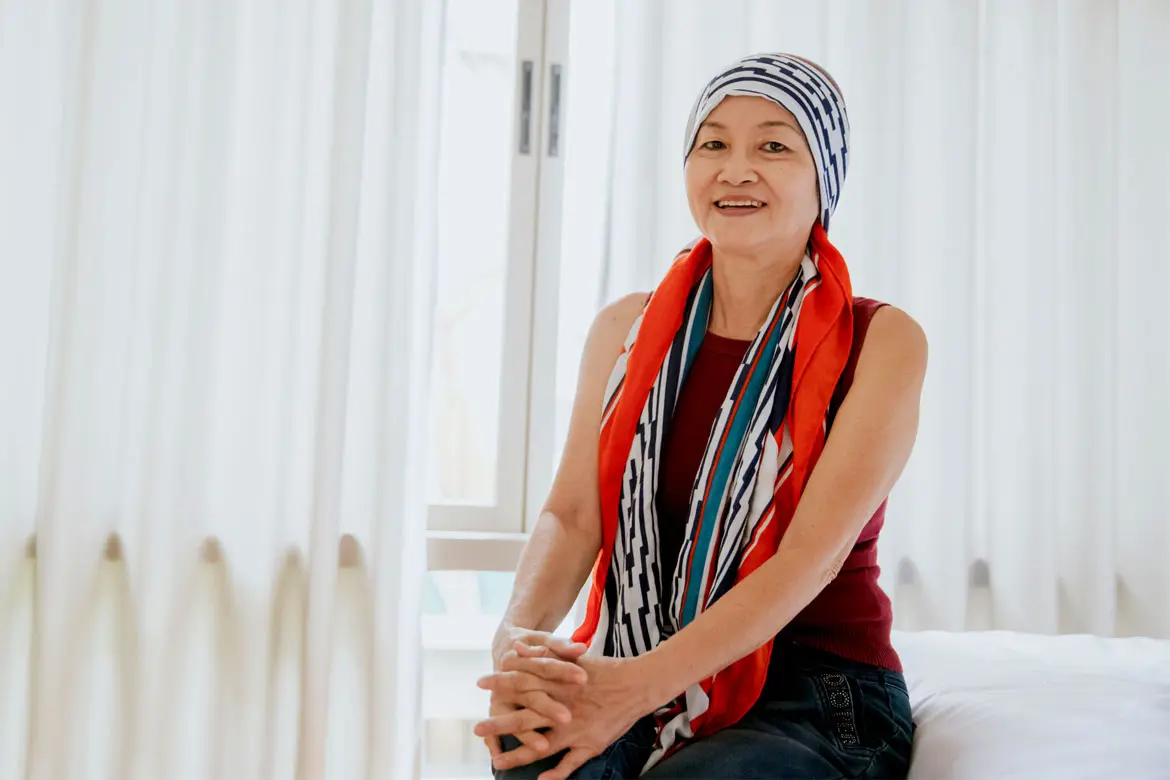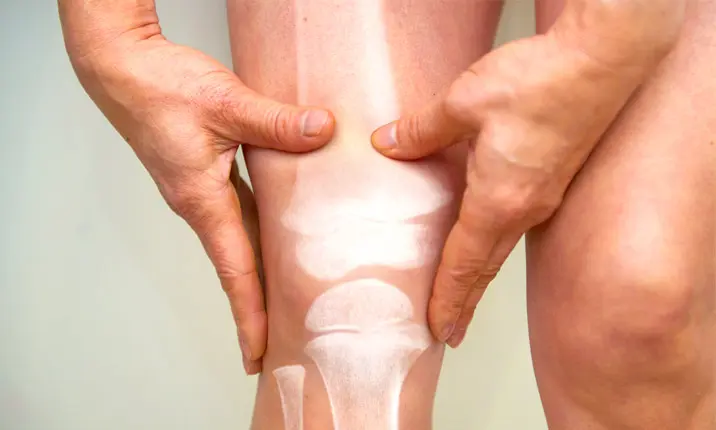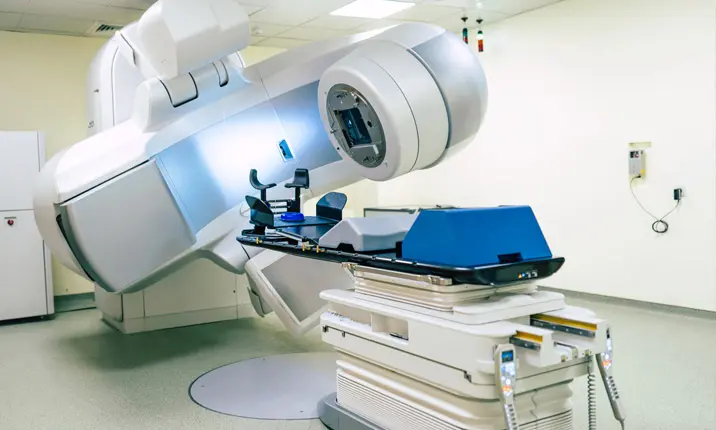What is sarcoma?
Sarcoma is a rare form of cancer that affects the bones and connective tissues. Subtypes of sarcoma can develop and affect parts of bone, connective tissue, and areas such as blood vessels, nerves, muscle, and fat, including tissues around bones and joints. Sarcomas differ from other forms of cancers in their cell of origin. While most other forms of cancers develop from epidermal tissue, sarcomas develop from mesodermal tissue.
What are the types of sarcoma?
There are mainly 70 well-known subtypes of sarcoma. Sarcomas can be broadly divided into 2 main categories – soft tissue sarcoma and bone sarcomas.
Soft tissue sarcoma
The subtypes of soft tissue sarcoma are generally based upon the specific tissue or the area it is known to affect, such as:
- Leiomyosarcoma, which arises from smooth muscles of the uterus or veins
- Liposarcoma, which arises from fat tissue and typically develops in the abdomen, trunk, and limbs
- Angiosarcoma, which arises from blood vessels
- Rhabdomyosarcoma, which arises from skeletal muscles
- Kaposi's sarcoma, which affects the skin and other tissues. Herpesvirus 8 is a cause of this condition
- Malignant peripheral nerve sheath tumours, which arise from nerves
- Myxofibrosarcoma, which affects the connective tissue and occurs in the legs and hands of adults
- Synovial sarcoma, commonly affecting the limbs and trunk, is a misnomer as it does not arise from the synovium but from the connective tissue of the body
- Gastrointestinal stromal sarcoma, which is one of the most common forms of sarcoma. It is thought to arise from the pacemaker cells of the intestines. It is characterised by the presence of cKIT or PDGFRA mutations in the majority of cases. It is looked upon as a distinct disease from the rest of soft tissue sarcoma.
Bone sarcomas
Common sarcomas of the bone include the following subtypes:
- Osteosarcoma, which typically arises from long bones
- Ewing sarcoma, which affects the soft tissue or bone
- Chondrosarcoma, which affects the cartilage
How rare is sarcoma?
Sarcoma is one of the rarest forms of cancer. Not only is it rare, but it is also very heterogeneous, comprising more than 70 distinct subtypes of the disease. The rare subtypes of sarcomas may have an incidence of ≤1 per 1,000,000 of the population, which makes it extremely challenging in terms of conducting research and clinical studies into these diseases.
What are the causes and risk factors of sarcoma?
Causes and risk factors of sarcoma vary between each subtype of sarcoma. From what is known about sarcoma, these cancers tend to occur as a result of changes in the DNA of the soft tissue cells or bone. These cells eventually become tumours with uncontrollable growth, affecting the healthy tissues.
Significant risk factors for sarcoma include:
- Exposure to cancer-causing chemicals and other hazardous substances
- Exposure to certain viruses such as human herpesvirus 8 (HHV8), which may lead to the development of a kind of sarcoma known as Kaposi's sarcoma in individuals with low immunity
- Exposure to radiation, usually after radiation treatment for other cancers, may increase the risk of radiation-related sarcomas years later
- Genetically inherited diseases involving cancer-predisposing genes passed down from parents to children may increase the risk of sarcoma development. Examples include Li-Fraumeni syndrome, neurofibromatosis type 1, and familial adenomatous polyposis
- Lymphedema or persistent swelling, or a blocked or diseased lymphatic system, makes you prone to a sarcoma type called lymphangiosarcoma
Precautions to take to avoid sarcoma include:
- Avoiding exposure to harmful radiation
- Avoiding exposure to cancer-causing chemicals
What are the signs and symptoms of sarcoma?
The signs and symptoms of sarcoma usually depend on its type and site of occurrence.
Soft tissue sarcoma
- Lumps and bumps, usually painless, are common early signs of sarcoma. These masses tend to grow and may reach sizes as large as 20cm or more
- Lumps, irrespective of size, found deep in the muscle
- Worsening abdominal pain
- Black stool
- Blood in vomit or stool
- Skin lesions
- Swelling
Bone sarcoma
- Persistent pain in bones, especially pain that occurs at rest and at night while sleeping
- Bone swelling
- Fractures after minimal trauma
- Occurrence of a lump with pain and swelling in the later stages
- Sensation of numbness, tingling, or weakness due to pressure on nerves in the case of spine cancer
- Restricted mobility
If you experience any lump or symptoms of sarcoma, get testing done early as a precautionary measure.
How is sarcoma diagnosed?
Biopsy
Overall, the best diagnostic method for sarcomas is a tissue biopsy so that a proper histological diagnosis can be given. A biopsy is a procedure in which a small tissue sample is excised from the tumour for further analysis.
Imaging
Prior to a biopsy, imaging studies would usually be performed to assess the lesion and examine its relations to other surrounding critical structures. Once a sarcoma is confirmed through a biopsy, your doctor may perform further imaging studies to assess for operability of the tumour as well as possible spread of the disease.
Some imaging modalities include:
- Plain X-rays to detect the condition of the involved bone(s)
- Magnetic resonance imaging (MRI), which can provide clear images of soft tissues and bones along with the details of the extent of the condition spread in the body
- Computerised tomography (CT) scan, to examine the affected area as well as to assess for possible spread of the sarcoma
- A positron emission tomography (PET) scan, which involves the use of a radioactive glucose which highlights tumour activity, size and location
- Bone scan, which can help to detect abnormalities in the skeletal system
How is sarcoma treated?
The treatment of both bone and soft tissue sarcomas is very complex, and has evolved over the past 2 decades. Your doctor might suggest specific treatment options for the treatment of soft tissue or bone sarcoma, such as:
- Surgery, which involves the removal of the tumour along with some parts of the surrounding healthy tissue. Sarcomas such as chondrosarcoma are best treated with surgery alone.
- Radiation therapy before or after surgery
- Chemotherapy, which is a procedure that destroys cancerous cells present even after the surgery. Sarcomas such as Ewing's sarcoma and rhabdomyosarcoma are very sensitive to chemotherapy.
- Targeted therapies, which are recent advancements in the field that involve drugs or artificial antibodies that block sarcoma cell growth.
Speak to your oncologist
If you or anyone in your family is experiencing similar symptoms, talk to your oncologist for advice on the symptoms, diagnosis, and treatments. Seeking early treatment is crucial in combatting sarcoma.















